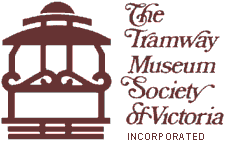
| About TMSV | Visitor information | Our collections |
Current projects | Feature articles | Join TMSV | Useful links | TMSV news |
 |
|||||||||
|
|||||||||
|
Collections
|
M&MTB W3 No 667The M&MTB built this tramcar in 1934 at Preston Workshops, one of a 16 car order built over a period of five years. The building time was extended due to the economic conditions imposed by the worldwide depression. In order to reduce building costs, these cars made use of 33 inch wheel and axle sets obtained from scrapped single truck tramcars. This can be noted from studying No 667, as one axle set has wheels with a different spoke design to the other three. These tramcars were notable for being the first tramcars built by the M&MTB to have a completely steel frame, as previous cars had composite steel and timber frames. They made use of components originally manufactured for the Y1 class, the order for which was cut short due to union opposition to the design which was aimed at the use of one man tram crews. As well as the recycling of components from scraped tramcars, construction costs were lowered by use of plywood as the roof material rather than hardwood slats. One of the major reasons for the construction of these tramcars was to retain the manufacturing capability of Preston Workshops during the period of the Depression. The W3 design was unpopular with both passengers and drivers. The body design was basically a modification of the W2 body, except that it was mounted on bogies with 33 inch wheels rather than 26 inch. This additional height off the railhead resulted in high steps between the road and the drop centre, together with the internal step into the saloon. This was recognised during the preparation of the design, which attempted to ameliorate the saloon step height by curving the drop centre floor in a convex manner. The W3 was also able to reach a higher top speed than the W2 due to the reduction in weight from the steel frame, together with the larger wheels. The new design of bogies used on these trams, M&MTB No 9, resulted in a ride noted for its smoothness compared with the W2 class of tram. However, the brake cylinders were mounted on the truck frames, and due to this factor and the length of the air pipes from the brake valve to the cylinders resulted in a reduction in speed of brake application, hence the unpopularity of the design with drivers. The design of these bogies, however, was used as the basis for the design of M&MTB No 15 trucks, which was used for nearly all M&MTB tramcars from the W5 class through to the W7. No 667 served from a number of depots during its career, including South Melbourne (Hanna Street), Coburg and Brunswick Depots. All remaining W3 tramcars were withdrawn in 1969 due to union opposition, the TMSV purchasing No 667 from the M&MTB in 1976. This tramcar was the first to operate under power at the Bylands museum site. It subsequently underwent a restoration back to original as-built condition, which was completed in March 2000.
|
![]() Last
updated 22
September 2004.
Last
updated 22
September 2004.
![]() Content
copyright © Russell
Jones 2001-4. Reproduced with permission.
Content
copyright © Russell
Jones 2001-4. Reproduced with permission.